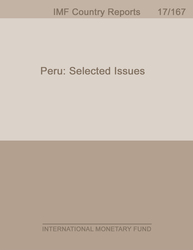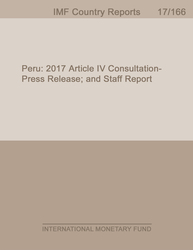
Republic of Armenia: Request for Arrangement Under the Extended Fund Facility; Staff Report; Press Release; and Statement by the Executive Director for the Republic of Armenia
KEY ISSUESContext and recent developments. Performance under the 2010–13 program, which was supported by arrangements under the Extended Fund Facility and Extended Credit Facility, was sound, with growth restored, large fiscal and external imbalances reduced, and buffers rebuilt. However, challenges remain, particularly in further reducing vulnerabilities and strengthening medium-term growth dynamics. Growth and inflation have remained volatile—in 2013, growth slowed significantly and inflation rose well above the CBA's target range. The external current account deficit and dollarization continue to be high, keeping the economy vulnerable to shocks. Poverty and unemployment also remain high, and the transition to an alternative to the pre- crisis, construction-led growth model—involving a more open, competitive, and globally- and regionally-integrated economy—has been slow.Program objectives. In light of these challenges, the Armenian authorities have requested a new 38-month arrangement under the Extended Fund Facility, with access equivalent toSDR 82.21 million (89.4 percent of quota). Key objectives of the new program are to consolidate stability and buffers against possible external shocks and to support growth through further reforms in the transition towards a dynamic emerging market economy.Program policies. Fiscal policy will support the growth recovery in 2014 by providing a modest stimulus, before moving to a gradual consolidation stance in 2015–17. This will place public debt on a declining path during the program period. Revenue measures will support the consolidation and also create room for addressing social and investment needs. Monetary and exchange rate policies will be guided by the authorities' framework of inflation targeting and exchange rate flexibility, with program policies focusing on continued improvements in monetary operations, communications, and modeling. Financial sector policies will target implementation of remaining recommendations of the 2012 FSAP Update, which aim to promote resilience to shocks and greater financial deepening. Structural reforms will support medium-term growth by targeting improvements in the business climate, strengthening institutions, improving connectivity and competition, creating a stronger environment for private and foreign direct investment, and tackling key risks, especially in the energy sector.Staff views. Staff supports the authorities' request for an Fund-supported program. The LOI/MEFP provides a strong set of policies to pursue the objectives of the program. While the program is not without risks, staff assesses Armenia's repayment capacity to be robust, with the fiscal consolidation and growth-supporting reforms embedded in the program reinforcing this assessment. If the program's policies are implemented, and barring any major shocks, the program should be able to achieve exit from Fund support, with Armenia sustaining market access at the end of the program period.
Publication date: March 2014
ISBN: 9781475535778
$18.00
Add to Cart by clicking price of the language and format you'd like to purchase
Available Languages and Formats
| English |
Prices in red indicate formats that are not yet available but are forthcoming.
Topics covered in this book
This title contains information about the following subjects.
Click on a subject if you would like to see other titles with the same subjects.
Money and Monetary Policy , International - Economics , Public Policy ,
Also of interest
Summary
Copyright © 2010 - 2024
Powered by:
AIDC



